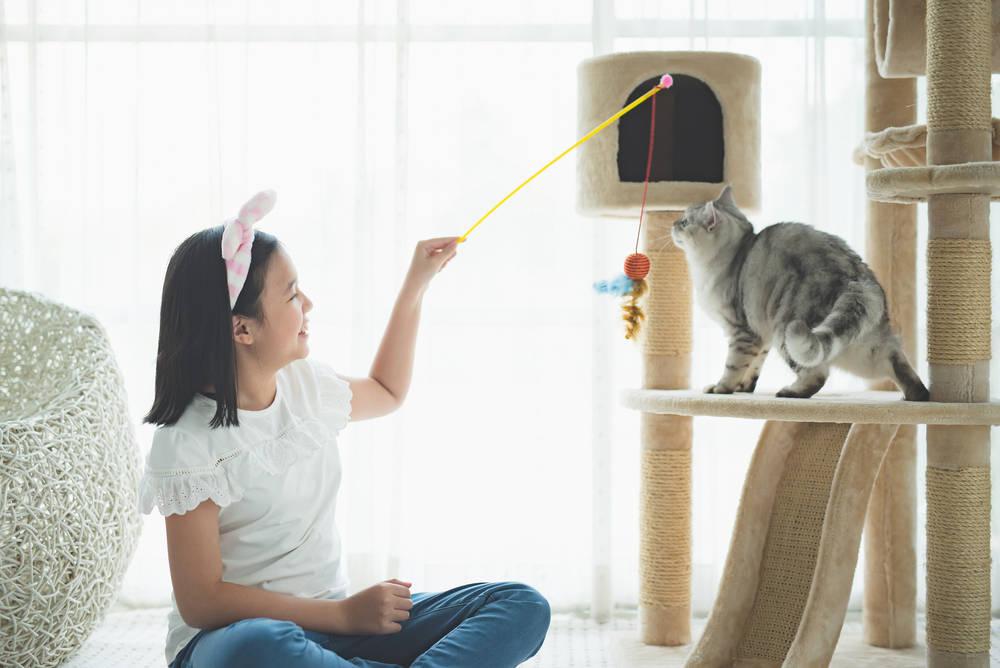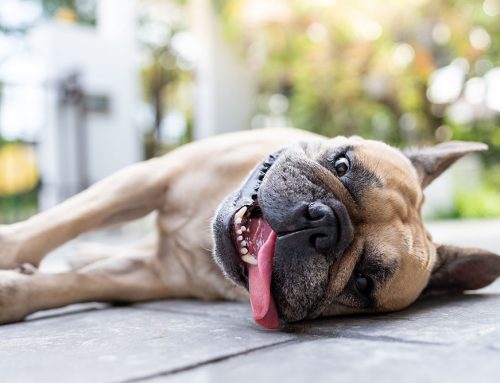Whether your child is excited or upset about returning to school, this situation can be challenging for your pet. Our team at Westerville Veterinary Clinic would like to help you prepare your pet for the back to school upheaval with these do’s and don’ts.
DO ensure your pet is properly identified
As schedules change, and children are coming and going, your pet may become upset and use the commotion as cover to escape through an open door. Ensure your pet always wears a collar and accurate identification tags should they become lost. Microchipping is an excellent way to ensure they will be returned to you if they cannot find their way home.
DON’T allow your pet outside without supervision
The new school year means more parents ferrying kids, and more buses on the roads, resulting in more traffic. Keep your pets leashed at all times near roadways, and teach them proper traffic safety. Train them to sit when they reach a curb, and to wait for your command to continue across the street. Retractable leashes should be locked at a set length to prevent your pet from running toward traffic. Harnesses work well for pets who tend to escape traditional collar and leash combinations.
DO start early to change your pet’s routine
Two to three weeks before school begins, change your family’s morning and evening routines to mimic the school year. This will help you, your family, and your pet transition to the new schedule, and help your pets adjust before they are left home alone for the day.
DON’T allow your pet to access your child’s backpack or lunchbox
Many foods, objects, and products that your child may require for a school day can be harmful for your pet.
- Small or easily breakable objects — If your pet is snooping through your child’s backpack and accidentally ingests an eraser, a paper clip, or a small pencil sharpener, for example, the item could choke your pet, or cause an intestinal obstruction, resulting in a veterinary emergency.
- Art supplies — Certain art supply products can be toxic to pets. Look for products carrying an approved product (AP) or cautionary label (CL), to ensure they are safe for your child and your pet.
- Inhalers — Your child’s albuterol inhaler can be dangerous if your pet punctures the plastic while chewing on the inhaler. Signs indicating an overdose include hyperactivity, dilated pupils, panting, vomiting, and tremors.
- Attention deficit hyperactivity (ADHD) meds — These medications are extremely dangerous for your pet, and can cause drooling, vomiting, diarrhea, hyperactivity, and seizures.
- Xylitol — Xylitol is an artificial sweetener found in several human foods, such as candy and gum. This ingredient causes excessive insulin release in dogs that can result in profound hypoglycemia, liver failure, and seizures.
- Grapes and raisins — These foods can cause life-threatening kidney failure in pets.
- Onions and garlic — These foods can cause hemolytic anemia, with signs that include lethargy, decreased appetite, pale gums, fainting, and reddish urine in pets.
DO exercise your pet
Before you and your children leave for the day, exercise your pet to tire them out, so they will be ready for a snooze. Providing mental stimulation by playing a game or practicing a new trick will help keep them mentally engaged, and tire out their brain as well as their body. If possible, ask a friend or hire a pet sitter to walk your pet and offer play time during the day.
DON’T cause drama for you pet
Ensure your departure and return home are low key. If you or your children make a big fuss about leaving your pet, or greeting them when you return, your pet will think the moment is stressful and act accordingly. Pets pick up on their human’s emotions, and they can interpret excessive displays of affection as a reason to be upset.
DO teach your pet how to manage being alone
During the summer months, ensure your pet spends time alone in a crate or another room. Keep them occupied and distracted with a food-puzzle toy. Teaching them that they do not need your presence at all times will help prevent separation anxiety when the school year starts.
DON’T forget your pet’s basic needs
If you have to shuttle your child to school, and then to several meetings and practice sessions, you may forget your pet in the craziness. Ensure you keep your pet’s food and pet supplies in stock. Also, ensure you do not forget to administer their flea, tick, and heartworm preventives by marking your calendar or setting alarms on your phone.
DO ensure your pet has a routine

Pets appreciate a routine they can rely on as much as humans, and like to know when they will be fed, exercised, and groomed. Spend time daily with your pet to ensure they know they are loved and part of the family.
Taking steps to ensure your pet is kept safe as your child returns to school will make the back to school period as low stress as possible. If you are concerned that your pet may be affected by separation anxiety, or you have any other questions about your pet, do not hesitate to contact our team at Westerville Veterinary Clinic to schedule an appointment.







Leave A Comment